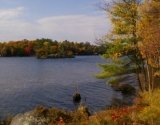Wood Burning Stoves at the Cottage
A Common heating system found in cottages are wood burning stoves.Terrific on a cool spring or fall night for taking the chill out of the air. Full heating in the winter or a romantic evening cuddled up watching the fire they are hard to beat. It is a very popular and economical heating option.
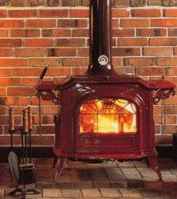
There is really no difference in functionality between cast iron, steel, painted or enamel finishes. The difference will be in personal preference and price but not the heating.
The heating characteristics of wood burning stoves have changed a lot in the past twenty years. You might find older wood burning stoves in quite a few properties.
Be careful, a lot of these stoves may have been installed by the owners without having approval.
Your offer of purchase should include a WETT certification of the stove. Your insurance company will probably require this any way.
The newer stoves use what is called catalytic or non-catalytic combustion.
In catalytic combustion, the smoke is passed through a honeycomb catalyst where the smoke and particles reignite and burn. This honeycomb will break down over time.
Increased life can be expected by not over burning the stove and regular cleaning's. Just to point out these are not cheap to replace, expect several hundred dollars.
The non-catalytic combustion stoves rely on a combination of insulation, large baffles and to pre-heat the combustion air though a series of holes above the wood in the firebox.
Catalytic stoves are a higher performance variety, do carry a premium price tag and require a bit more maintenance and care. Depending on the size of the stove and the area you are heating, both will provide an excellent source of heat.
Tips for the use and care.
CHIMNEY INSPECTIONS AND CLEANING
You should inspect your wood stove frequently during the heating season for creosote build up. If you discover excess build up find out why, you may be burning wood that has not been seasoned enough or are not burning your stove properly.
Stovepipes and chimney flues should be cleaned and inspected each year before you use your stove. Look for birds nests, broken or missing bricks, cracked flue liners, creosote deposits and any other material.
ASHES
Store ashes in a non-combustible metal container with a tight lid. Be careful coals can stay lit for days. Keep away from all combustible materials
FIRE EXTINGUISHERS AND DETECTORS
Yes, you should have a multi-purpose fire extinguisher on hand. As per the Ontario Building Code you must have working smoke detectors.
Ontario Cottage- Back to Home Page

BIG RIDEAU LAKE
3276 MacDonald Island Road
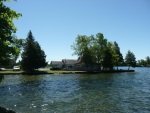
1473 North Shore Road Kingston
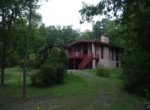
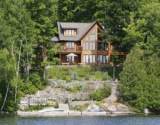
BUYER PROGRAM
